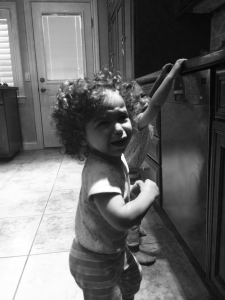What is Trauma? Trauma includes, but is not limited to, physical and/or sexual abuse, violence in the community or school, domestic violence, neglect, medical trauma (can involve the child or child’s family member experiencing injury, illness, pain and suffering, or intense medical treatment), war, natural disasters, acts of terrorism, and childhood traumatic grief (occurs when someone close to a child dies, such as a parent or sibling, and the child’s perception of the experience is traumatic).
What are the effects of trauma? Depending on the type of trauma, approximately 5-20% of children who experience trauma develop PTSD (Post Traumatic Stress Disorder). PTSD is a diagnostic term that includes specific symptoms that meet certain diagnostic criteria and occur following exposure to a traumatic event. Not all children and teens exposed to trauma develop PTSD. The diagnosis of PTSD is made by a mental health professional. I am not going to cover the diagnostic criteria for PTSD in this post. Instead, I will discuss PTSD and trauma/traumatic stress interchangeably because the treatment is similar.
Many children and teens exposed to trauma do not develop PTSD, but may experience ongoing stress and other difficulties from the trauma. However, not all children and teens exposed to trauma develop traumatic stress or PTSD. Some children rebound from the trauma without any lasting difficulties. The child or teen’s ability to cope with the trauma depends on many factors, including the type of trauma, whether it was a single event or multiple events, the age and developmental stage of the child, and other factors such as ability to access resources and family support. Also, children and teens are individuals and will respond individually to trauma.
What are the signs of stress from trauma? Depending on the age of the child, the signs can include anxiety and fear, feelings of helplessness, fear of separation from parents, worrying about the safety of themselves and others, trouble eating, reenacting the trauma through play, telling the traumatic story over and over, acting clingy, sadness and depression, nightmares, flashbacks, difficulty concentrating, difficulty sleeping, an increased startle response, acting out or risky behaviors, irritability, self harming behaviors (cutting, eating disorders, etc.), shame, relationship and/or attachment difficulties, feeling numb or indifferent, bedwetting, avoiding places and situations that remind them of the event, and overall behavior changes. Many parents who bring their child to counseling mention that they noticed behavior changes around the time the trauma occurred.
How is trauma and PTSD treated? Trauma and PTSD is treated slightly differently in children than in adults. I am not going to discuss treatment for adults in this post. Early intervention has shown to be very effective in treating trauma. Children and teens are resilient and can recover from traumatic experiences. There are many different types of counseling and psychotherapy that have been proven to be effective in treating children and teens. The type of counseling/psychotherapy treatment used may depend on the counselor, the age of the child, the type of the trauma, and the effects of the trauma.
I primarily use TF-CBT (Trauma Focused Cognitive Behavioral Therapy) for treating children and teens experiencing signs of traumatic stress or PTSD. I have treated over 50 children and teens who have experienced trauma, including, but not limited to physical and/or sexual abuse, neglect, natural disasters (Hurricane Katrina), environmental trauma (gang violence), medical trauma (either the from trauma experienced by child, trauma from the parent’s medical issue(s), and traumatic grief.
TF-CBT (Trauma Focused Cognitive Behavioral Therapy) is an evidence based practice that has very strong research evidence to support its use in children and teens. It can be used in children from ages 3-21, and can be used to treat various effects of trauma, including PTSD, depression, anxiety, acting out/externalizing behaviors, academic difficulties, and relationship difficulties. I have personally found it to be a very effective treatment for trauma. I am also a Credentialed Art Therapist, so I often incorporate art into components of the treatment, especially when working with young children, or children with limited verbal skills. Art Therapy when combined with TF-CBT, or other types of CBT, can be very helpful in the treatment of trauma.
For a parent or caregiver, knowing that a child has endured trauma and is suffering is one of the most painful feelings in the world. Parents often wonder what they could have done differently, and the parents suffer alongside the child. However, knowing that there is help for their child or teen, and they can recover, often provides parents with much needed hope and strength. Parents can also benefit from attending counseling with their child (which is part of TF-CBT therapy). Also, the parent(s) may also benefit from their own individual counseling to cope with stress and grief related to the trauma, and the impact of the trauma on them and their child.
If you live on the San Francisco Peninsula and are interested in counseling or psychotherapy for your child or teen, or are an adult victim of trauma looking for counseling services, please contact me for more information.


Leave A Comment